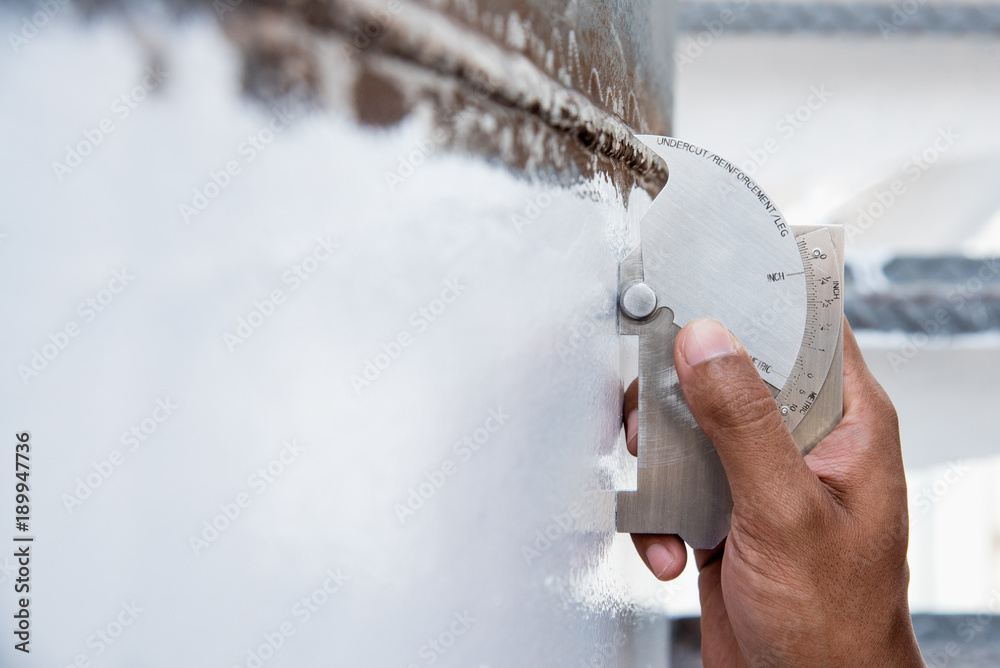Recognizing the Trick Actions In Tank Welding Inspection Procedures
Wiki Article
A Detailed Introduction of Storage Tank Welding Evaluation Requirements and Methodologies for Improved Weld Top Quality and Efficiency
The value of welding examination criteria in the production of containers can not be overemphasized, as they serve as the foundation for ensuring weld stability and functional reliability. Various assessment strategies, including visual evaluations and progressed non-destructive screening methods, are critical in identifying possible flaws that could compromise performance.Importance of Welding Evaluation Standards

Welding assessment requirements include a variety of requirements, including material specifications, welding procedures, and qualifications of workers associated with the welding process. By imposing these criteria, organizations can methodically identify and correct possible problems, thereby decreasing the possibility of expensive fixings or catastrophic failures. Additionally, extensive assessment techniques cultivate a society of responsibility and precision, motivating welders to maintain high degrees of craftsmanship.

Common Welding Examination Strategies


Ultrasonic Evaluating (UT) is an additional widespread strategy, using high-frequency audio waves to spot inner imperfections that might not show up externally. This method is specifically reliable for determining gaps or inclusions within the weld metal. Magnetic Bit Examining (MT) is additionally extensively utilized, especially for ferromagnetic materials, as it discloses surface and near-surface defects through the application of magnetic fields and ferrous particles.
Furthermore, Liquid Penetrant Screening (PT) discovers surface-breaking problems by using a penetrant to the weld and after that utilizing a programmer to extract the penetrant. Each of these techniques contributes to a comprehensive examination technique, guaranteeing that welds meet the rigid high quality standards called for in container construction.
Governing Requirements and Conformity
Regulatory criteria and conformity are crucial components in guaranteeing the safety and integrity of welded frameworks in tank building and construction - Tank Welding Inspection. These criteria serve to develop minimum demands for material residential properties, welding procedures, and examination techniques, consequently lowering the threat of structural failings and improving overall performanceTrick companies, such as the American Society of Mechanical Engineers (ASME) and the American Continued Welding Culture (AWS), offer guidelines that are extensively embraced in the sector. Compliance with these standards not only makes certain adherence to ideal practices however likewise fulfills lawful and legal obligations, securing the rate of interests of stakeholders.
Regulatory bodies usually mandate adherence to specific codes, such as ASME Code Area IX for welding qualifications and API 650 for welded tanks. These codes detail needs for welding strategies, qualifications of personnel, and screening methods to validate weld honesty.
Regular audits and evaluations are critical to keeping compliance, as they assist identify variances from developed requirements. Non-compliance can lead to considerable charges, job delays, and safety and security risks. Hence, a robust understanding of regulative criteria and a dedication to conformity are extremely important in accomplishing high-grade and long lasting bonded container structures.
Non-Destructive Testing Techniques
How can the stability of welded structures be guaranteed without triggering damage? Non-destructive screening (NDT) approaches use a robust solution, making it possible for assessors to review weld quality without compromising the product - Tank Welding Inspection. Among one of the most typical NDT strategies are ultrasonic testing (UT), radiographic testing (RT), magnetic particle screening (MT), and dye penetrant testing (PT)Ultrasonic testing utilizes high-frequency acoustic waves to discover internal imperfections and define product residential or commercial properties. It supplies accurate dimensions and is especially efficient for thick products. Radiographic testing entails passing X-rays or gamma rays through the weld, creating photos that disclose structural problems such as cracks or gaps. This approach is important for evaluating the integrity of complex welds.
Magnetic bit screening is suited for ferromagnetic products, where magnetic fields disclose surface and Website near-surface gaps. Dye penetrant testing uses a liquid dye to highlight surface-breaking flaws, making it a reliable technique for non-porous products.
Each of these NDT approaches has unique advantages, allowing for thorough evaluations tailored to particular products and welding processes. By implementing these methods, sectors can ensure the dependability and safety and security of bonded frameworks, eventually enhancing overall efficiency.
Enhancing Weld High Quality Through Examination
Reliable assessment plays an important function in improving weld top quality, working as an important checkpoint in the manufacture process. By recognizing possible problems early, examinations reduce the threat of compromised architectural stability and make sure compliance with sector standards. Using a mix of visual examinations, non-destructive screening (NDT) approaches, and mechanical evaluations, assessors can identify problems such as porosity, splits, and incomplete combination.Applying a durable examination procedure not only boosts the overall high quality of welds but additionally promotes a society of responsibility amongst welders and producers. Regular training and accreditation of assessment employees guarantee that they are equipped with the required skills to acknowledge and address potential problems effectively. This aggressive technique lessens rework and connected costs, ultimately adding to predict effectiveness.
Furthermore, comprehensive documentation of examination searchings for gives important insights right into persisting problems, helping reference with continuous renovation in welding methods. By leveraging advanced modern technologies, such as automated ultrasonic testing or digital radiography, weld quality can be boosted with much more precise analyses. Finally, a rigorous evaluation procedure is crucial in attaining top quality welds, making certain security, reliability, and durability in tank construction.
Final Thought
To conclude, the application of extensive storage tank welding inspection requirements and approaches is crucial for guaranteeing weld stability and efficiency. By using a mix of visual evaluations, non-destructive screening approaches, and adherence to governing criteria, organizations can successfully recognize and alleviate possible issues. Promoting a society of responsibility among welders further improves the quality of welding processes. Eventually, these methods add to minimized structural failings, lower repair work costs, and improved functional effectiveness within the industry.Report this wiki page